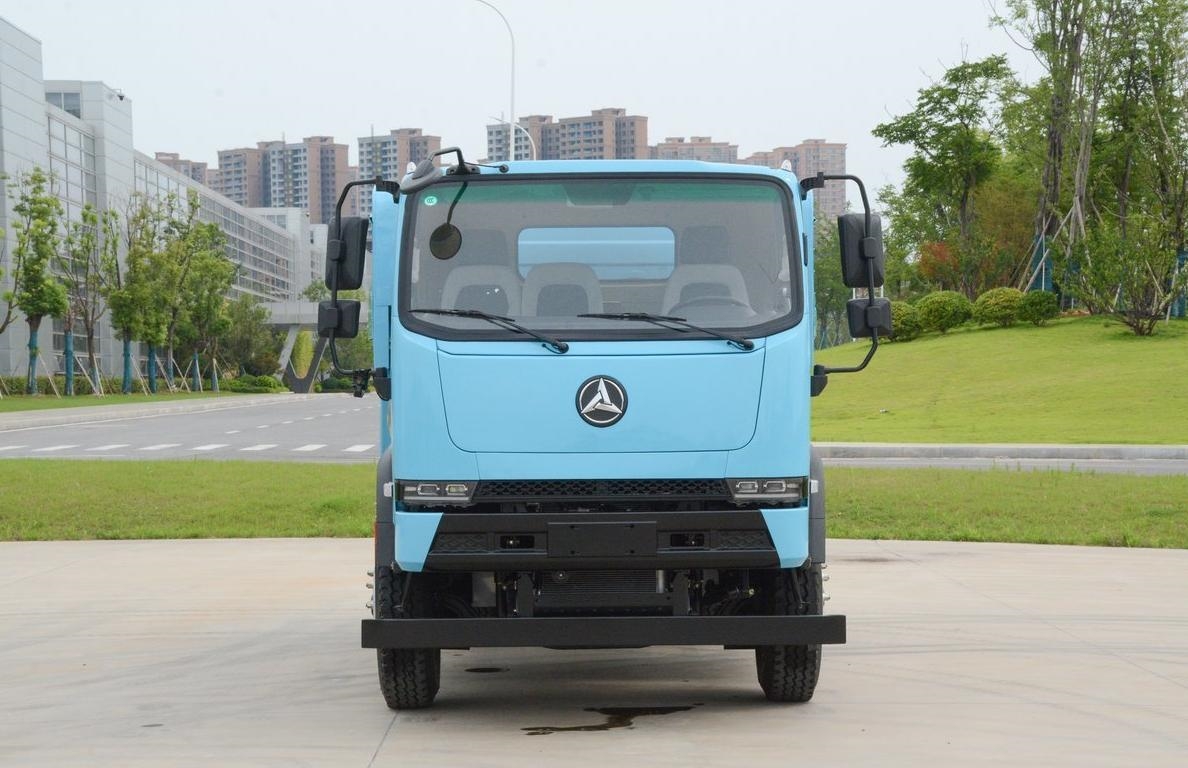Balita sa Electric Truck
Why Electric Vehicles Have Limited Driving Range
Electric vehicles (EVs) have gained widespread attention as a sustainable alternative to traditional internal combustion engine vehicles. Despite their many advantages, a common limitation is their restricted driving range compared to gasoline-powered cars. This limitation stems from several factors, including battery capacity, charging infrastructure, energy efficiency, and cost considerations. In this article, we delve into these factors to explore why EVs have limited range and the challenges involved in extending it.
1. Limited Battery Capacity
The primary reason for the range limitation of electric vehicles is the finite capacity of their batteries. Most EVs use lithium-ion batteries, which store and supply the electrical energy needed to power the vehicle. However, the energy density of lithium-ion batteries is much lower than that of gasoline.
For comparison, one liter of gasoline contains roughly 33.6 megajoules of energy, while the equivalent weight of lithium-ion batteries stores significantly less. This means that an EV battery must be much larger and heavier to provide a similar driving range to a gasoline car. However, increasing battery size has trade-offs:
- Weight: Larger batteries add significant weight to the vehicle, which in turn reduces energy efficiency and offsets the benefits of increased capacity.
- Cost: Batteries are one of the most expensive components of an EV, and larger batteries make the vehicle more expensive for consumers.
- Space Constraints: The size of the battery affects the design of the car, limiting interior and cargo space.
These factors create a practical limit to how much energy an EV battery can store, which directly impacts its range.
2. Charging Infrastructure and Speed
The availability and efficiency of charging infrastructure also play a critical role in limiting the range of electric vehicles. While gasoline cars can refuel in minutes at widespread gas stations, EVs rely on charging stations that vary widely in availability and speed.
- Slow Charging: Most public charging stations are Level 2 chargers, which can take several hours to fully charge an EV. Even fast-charging stations, which use DC current, require 20-40 minutes to reach 80% capacity. This slower process limits the practicality of recharging on long trips.
- Sparse Infrastructure: In many regions, charging infrastructure is still underdeveloped, particularly in rural or remote areas. Drivers may hesitate to rely on EVs for long-distance travel due to the fear of being unable to find a charging station.
- Compatibility Issues: Not all charging stations are compatible with all EV models, and charging networks are often fragmented, adding to the inconvenience.
Because recharging is less convenient and slower than refueling, manufacturers often design EVs with limited range, targeting shorter daily commutes rather than long-distance travel.
3. Battery Degradation Over Time
Another factor that limits the effective range of EVs is the gradual degradation of battery capacity over time. Lithium-ion batteries experience wear and tear with repeated charge and discharge cycles, leading to a reduction in their ability to hold a charge.
The degree of degradation depends on several factors:
- Charging Habits: Frequent use of fast chargers can accelerate battery wear due to the high currents involved.
- Temperature: Exposure to extreme heat or cold can degrade the battery materials and reduce performance.
- Depth of Discharge: Fully draining and recharging the battery frequently can shorten its lifespan.
As a result, an EV that initially offers a range of 400 kilometers may see a noticeable reduction after a few years of use. This natural decline in battery performance makes it challenging for manufacturers to promise longer ranges without increasing battery costs or implementing advanced battery management systems.
4. Energy Consumption Under Various Conditions
The range of an electric vehicle is highly sensitive to driving conditions and external factors. These can significantly increase energy consumption and reduce the effective range:
- High Speeds: Driving at highway speeds increases aerodynamic drag, which requires more energy to overcome. Unlike internal combustion engines, which can be more efficient at cruising speeds, EVs tend to consume more energy as speed increases.
- Cold Weather: In low temperatures, battery performance drops because the chemical reactions inside the battery slow down. Additionally, heating the cabin in cold weather draws power from the battery, further reducing range.
- Hilly Terrain: Driving uphill requires more energy, as the motor must work harder to counteract gravity.
- Additional Loads: Carrying heavy cargo or towing can significantly increase energy consumption, limiting the vehicle’s range.
These factors introduce variability to the range, making it difficult for EV manufacturers to promise consistent performance across different use cases.
5. Cost Considerations
The high cost of EV batteries also contributes to their limited range. Lithium-ion batteries are expensive to produce, and a significant portion of an EV’s price comes from its battery pack. Extending the range by increasing battery capacity would make EVs prohibitively expensive for many consumers.
To strike a balance between affordability and performance, manufacturers often opt for battery capacities that provide sufficient range for typical daily commuting needs rather than long-distance travel. Most EVs on the market offer ranges between 300-500 kilometers per charge, which studies show is sufficient for the majority of drivers.
6. Design Trade-Offs
Electric vehicle manufacturers face difficult trade-offs when designing their products. Increasing battery size to extend range involves compromises in terms of weight, space, and efficiency. Heavier batteries not only reduce the vehicle’s energy efficiency but also affect handling and performance.
Moreover, manufacturers must consider environmental sustainability. Producing larger batteries requires more raw materials, such as lithium, cobalt, and nickel, which are finite resources with significant environmental and social extraction costs. Designing EVs with moderate ranges helps minimize these impacts while making the vehicles more practical and sustainable.
7. Psychological Factors and Market Trends
The perception of range anxiety—a driver’s fear of running out of power before reaching a charging station—also influences how EVs are designed. While this concern is real, studies show that most drivers rarely exceed 50-100 kilometers in daily driving. By targeting this segment of the market, EV manufacturers aim to provide a product that meets most users’ needs without overengineering for scenarios that occur infrequently.
Additionally, the market for EVs is gradually shifting toward models with extended ranges, driven by advancements in battery technology and consumer demand. However, these improvements take time to implement and scale, keeping range limitations in place for most current models.
Konklusyon
The limited range of electric vehicles is the result of a combination of factors, including the finite energy density of lithium-ion batteries, the availability and speed of charging infrastructure, the impact of driving conditions, and the cost of battery production. These limitations are not arbitrary but rather carefully considered trade-offs that balance performance, affordability, at pagpapanatili.
As battery technology continues to advance, with innovations such as solid-state batteries and improved energy densities, the range of electric vehicles is expected to increase. In parallel, investments in charging infrastructure and faster charging methods will make long-distance EV travel more practical. Until then, EV manufacturers focus on designing vehicles that meet the needs of the majority of drivers while addressing the challenges of range and accessibility.




